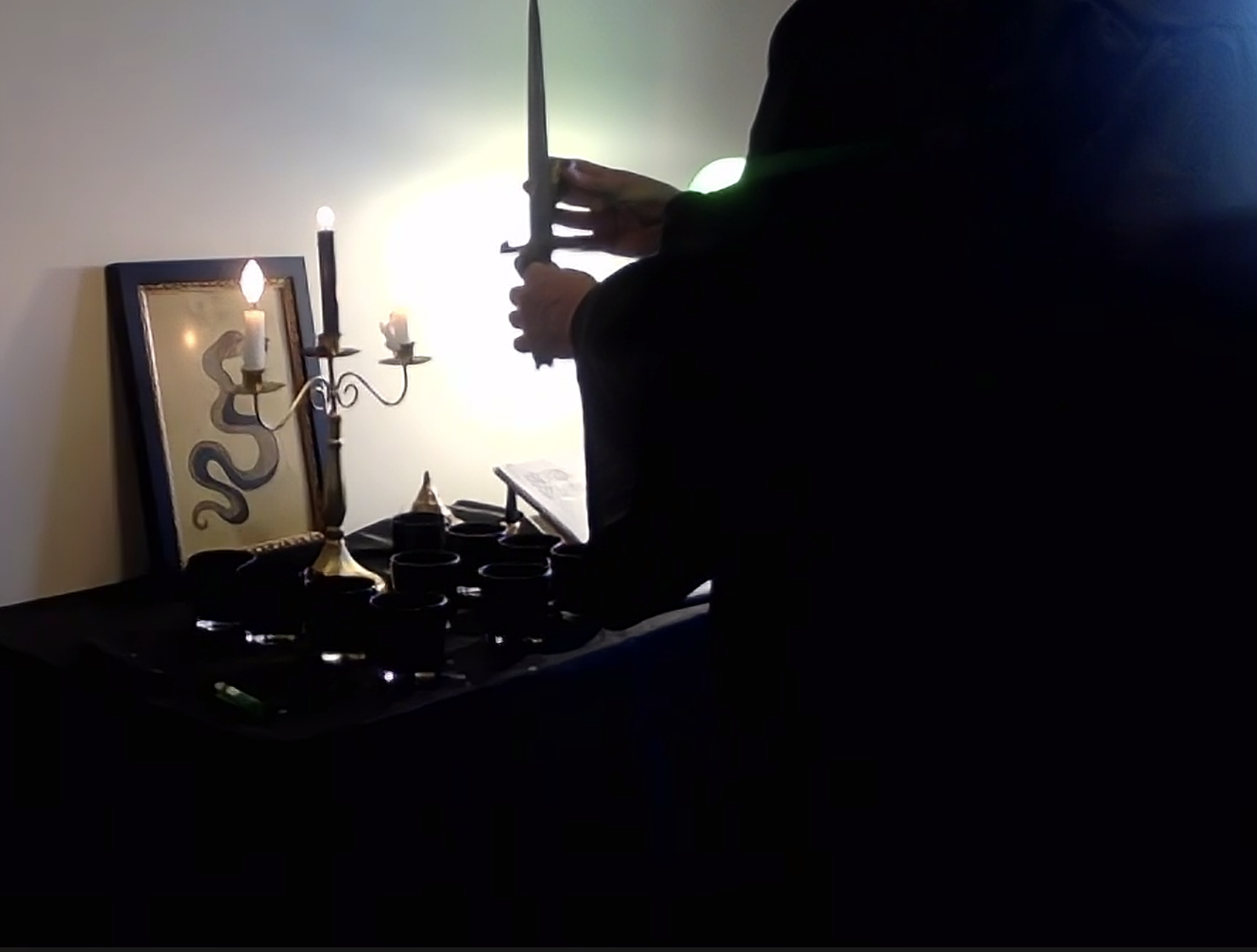
The Canonic Ierà is not merely a service; it is the fundamental Work of Ophidism. It is the ritual through which the Ophidian actively harmonizes with the eternal rhythm of the cosmos, tracing the path of the Serpent—the ultimate symbol of Existence.
This rigorous discipline is designed to channel the necessary internal Tension (Polemos) into actionable Gnōsis.
The liturgy is a living spiral, guiding the participant from the absolute stillness of the Void to the perpetual motion of Fieri(Becoming).
It is the necessary act of commitment for those who seek to live in accordance with the Pharmakon and embrace the total sovereignty of the self.
We do not offer a service to observe, but an Opera to undertake.
Ophidism is an extremely active religion and spiritual practice. This tendency toward spiritual action is not only manifested in a unique religious discipline, composed of individual devotion and collective liturgical practices, but also, and above all, in the central role the Ophidic community plays in all these practices.
The Ierà (Greek for 'sacred things') is not only our principal liturgy, but a true spiritual dialogue in which the Celebrant and participants unveil, one by one, the mysteries of Creation, engaging in the highest form of communication with the Divine. The metaphor of the Serpent's coils, which slowly and eternally spiral outwards, unveiling Reality, is therefore the highest form of analysis of Being, the primary instrument in the hands of the Ophidian to understand, and finally perceive, the Divine.
In addition to the liturgy, The Synodus proposes various other individual or collective spiritual practices that each Ophidian may follow to enhance their understanding of reality: the contemplatio mysteriorum and the euché (ritual prayer) are essential elements of every Ophidian’s spiritual routine, serving as unique instruments for the comprehension of the Self and Creation.
Dies Serpentis
The Weekly Celebration of the Serpent
The Dies Serpentis (Day of the Serpent) stands as the most sacred weekly observance within the Ophidian Community. It is not merely an act of devotion to the Divine , but an essential and joyful time of sharing for what Ophidism terms self-givenness , honoring the autonomous and selfless manifestation of the Serpent. This essential rite honors the profound silence of the Pharmakon and the intentional waiting for the divine event that has not yet taken place.
The celebration is addressed to all Ophidians, including consecrated members of the Synodus, lay people, and novices, and takes place every Saturday morning, before 11:11 AM. It is an hour dedicated to honoring the great mystery that is divine manifestation , beginning with profound preparations on the preceding Friday evening and culminating in concentrated silence and simple offering.
The entire rite culminates precisely at 11:11 AM, the symbolic weekly time of the Serpent’s self-givenness. At this exact moment, Ophidians celebrate the Manifestatio Dei (God’s self-givenness) with the festive sounding of the ritual bell or gong , the uncovering of the icon, and the singing of "O Pater Patris".
Official Indications for the Dies Serpentis
To fully understand the preparatory arrangements, the solemn prayer (Deus qui es et non es), the order of the candle lighting, and the procedural structure of the Day of the Serpent, we invite you to download the official indications from the Synodus.
The Ophidian Liturgical Year
-
The Udenerie are the beginning of the ophidian liturgical year and, although are not considered to be one of the major festivities of Ophidism, they cover a fundamental role in our system. The Udenerie, being connected to the Farmacon for their own symbology, symbolize the pre-creative state of Nothingness. For this reason, ophidians from all around the world celebrate this festivity with twelve hours of silence, from 11AM to 11PM.
-
The Ofisie (20-21-22 December) celebrate the descent of the Pharmakon into the cosmos. They mark the theological origin of all things, when the Nihil emanates the Serpent as the first being. Observed with solemn rites of silence and invocatory chants, the Ofisie are a time to reflect on the metaphysical foundations of the Ophidian path.
-
The Disoterie (20-21-22 March) are dedicated to Philia, the principle of love and aggregation. During these festivities the Ophidian organizes charity events and other ventures aimed to spread the joy of Ophidism among others.
-
The Faidrerie (20-21-22 June) are the feast of knowledge and illumination. They celebrate the light of understanding that dispels confusion and opens the path to transcendence. Marked by communal liturgies and meditative study, the Faidrerie invite each ophidian to rekindle their inner flame and to serve the Pharmakon with renewed wisdom.
-
The Tanasimee (20-21-22 September) are the celebrations of death and desegregation. This feast renews the Samaelite commitment to inner struggle and purification through discipline, knowledge, and ritual devotion. It is a day of preparation and vigilance for the long winter of death.

